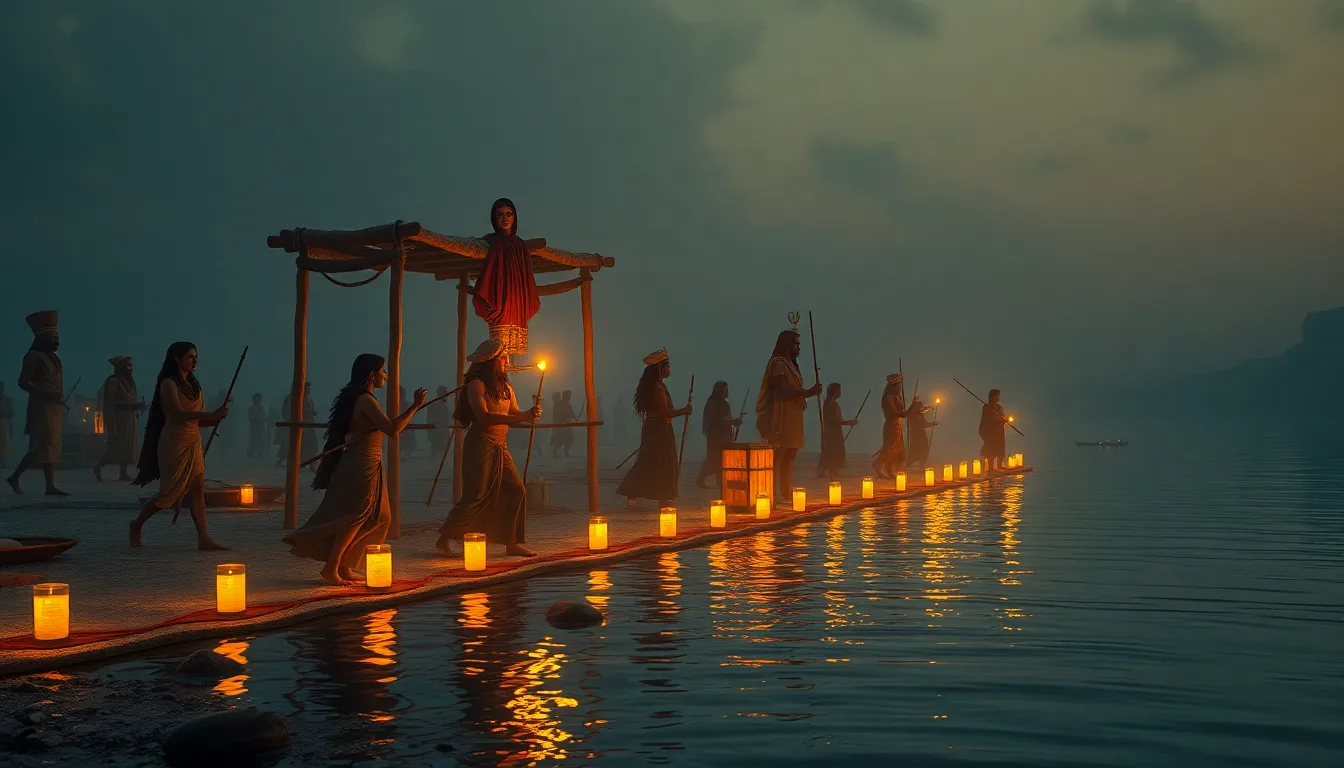The Rituals of the Festival of the Sacred River
I. Introduction
The Festival of the Sacred River is a time-honored celebration that honors the life-giving waters of ancient Egypt. This vibrant festival encapsulates the deep spiritual and cultural connections that the Egyptians have with their rivers, particularly the Nile, which has played a pivotal role in their civilization.
Significant both culturally and spiritually, this festival serves as a reminder of the river’s importance in sustaining life, agriculture, and the spiritual beliefs of the community. Celebrated annually, it draws thousands of participants who come together to engage in various rituals, festivities, and offerings that pay homage to the river.
The purpose of this article is to explore the rich tapestry of the Festival of the Sacred River, examining its historical background, preparations, main rituals, and the profound impact it has on the community and environment.
II. Historical Background
The origins of the Festival of the Sacred River can be traced back to ancient Egyptian times when the Nile was revered as a deity. The festival likely began as a way to ensure the river’s blessings, particularly in terms of fertility and abundance. Over the centuries, the festival has evolved, incorporating various cultural influences and regional variations, reflecting the diverse tapestry of Egyptian society.
Initially, the rituals were simple and focused on agricultural rites, but as time progressed, they transformed into elaborate celebrations involving music, dance, and communal feasting. These changes were influenced by various dynasties and external cultures, integrating elements from neighboring civilizations.
III. Preparations for the Festival
Preparations for the Festival of the Sacred River are a communal effort, with local communities coming together to plan and organize events. Roles are often assigned, with individuals taking on responsibilities such as decoration, preparation of offerings, and arranging processions.
In the weeks leading up to the festival, various ritualistic practices take place, including:
- Cleansing of the riverbanks
- Creation of altars and shrines
- Gathering of offerings from the community
The significance of offerings and decorations cannot be overstated. Local artisans craft beautiful decorations, while families prepare various offerings, including food, flowers, and incense, to honor the river and its deities.
IV. Main Rituals of the Festival
The main rituals of the Festival of the Sacred River are both elaborate and deeply symbolic. Key activities include:
- Ritual bathing and purification ceremonies: Participants engage in cleansing rituals, symbolizing purification and renewal.
- Processions and parades along the river: Communities come together to march along the riverbanks, adorned in traditional attire, celebrating with music and dance.
- Sacred chants, prayers, and invocations: Participants recite prayers and chants to invoke the blessings of the river deities, ensuring protection and prosperity.
V. Symbolic Offerings and Their Meanings
Offerings made to the river during the festival are rich in symbolism and significance. Common types of offerings include:
- Food items: Fruits, bread, and fish, symbolizing sustenance and abundance.
- Flowers and herbs: Representing beauty and the connection to nature.
- Incense: Used to purify the environment and attract the favor of the gods.
Each offering carries its own meaning, reflecting the community’s hopes and desires. Personal stories and testimonials from participants often highlight the deep emotional connections individuals have with these rituals, reinforcing their importance in the community.
VI. The Role of Music and Dance
Music and dance play an integral role in the Festival of the Sacred River, enhancing the spiritual experience and bringing the community together. Traditional music associated with the festival includes:
- Drumming
- Flute melodies
- Choral singing
Dance performances, often involving traditional styles, are used to express gratitude and joy. These performances not only entertain but also serve as a way to tell stories of the river and its significance. The combination of music and dance elevates the atmosphere, creating a sense of unity and shared purpose among participants.
VII. Environmental and Social Impact
The Festival of the Sacred River has a profound influence on local communities. It fosters a sense of identity and belonging, bringing individuals together in a shared celebration of their history and culture. The festival also raises awareness about the importance of river conservation and sustainable practices.
Environmental considerations have become increasingly important, with efforts made to minimize waste and protect the river’s ecosystem during the festival. Challenges faced by the festival in modern times include:
- Pollution and environmental degradation
- Urbanization affecting the riverbanks
- Climate change impacting water levels
VIII. Conclusion
In reflection, the Festival of the Sacred River stands as a testament to the enduring cultural and spiritual significance of the Nile in Egyptian society. It embodies the reverence for nature and the community’s commitment to preserving its traditions.
As we look toward the future, it is essential to recognize the challenges the festival faces and to engage in efforts to preserve its rich rituals and cultural heritage. Participation in the festival not only honors the past but also ensures that future generations can experience the beauty and significance of the Festival of the Sacred River.
We encourage everyone to participate, celebrate, and contribute to the preservation of this vital cultural event, nurturing both community spirit and environmental stewardship.




